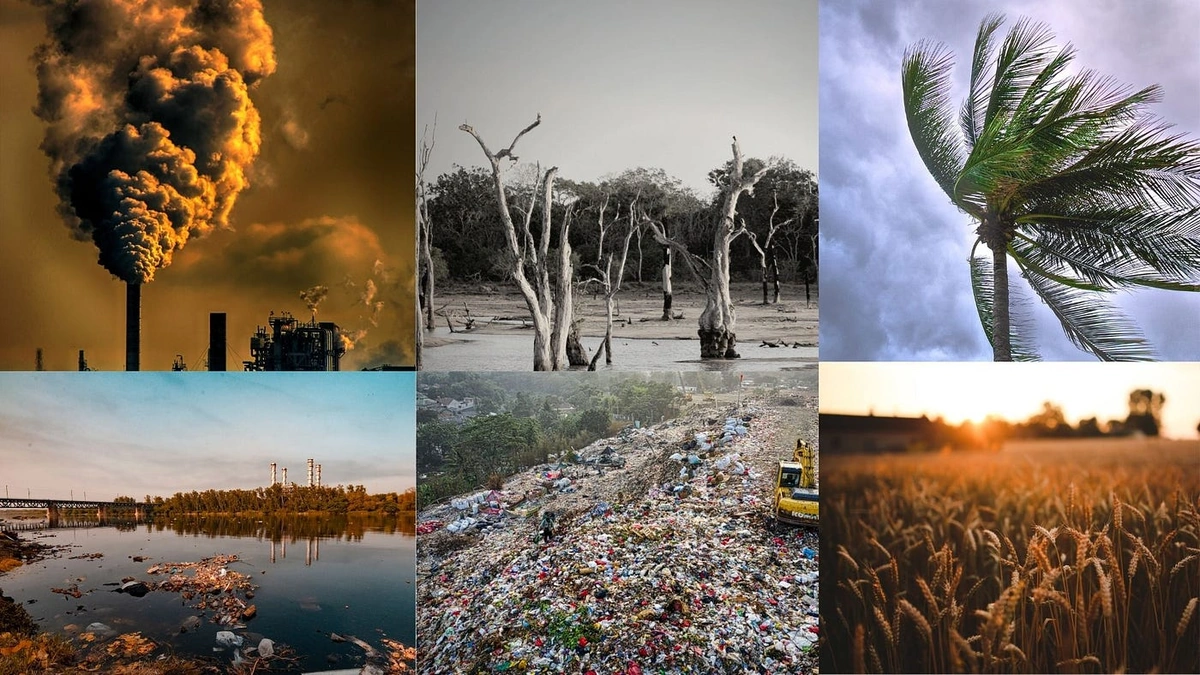Okay, let’s be real. When you hear ” climate change effects ,” what’s the first thing that pops into your head? Probably a sad polar bear clinging to a melting iceberg, right? And while those images are definitely powerful and serve a purpose, they barely scratch the surface of the real, tangible impacts hitting everyday folks – like you and me – right here in the United States. What fascinates me is how these impacts are deeply interconnected, influencing everything from our grocery bills to our mental health.
Why Should You Care About Rising Sea Levels Inland?

Rising sea levels? Sounds like a coastal problem, doesn’t it? But – and this is a big but – it’s not just beachfront properties at risk. Think about it: as seawater pushes inland, it contaminates freshwater sources. That’s not just bad for drinking water; it screws with agriculture, impacting crop yields and driving up the cost of everything from lettuce to your morning coffee. Consider this : saltwater intrusion can render farmland unusable for decades. The “why” here is simple: water is life, and messing with it has ripple effects that touch every corner of our economy and well-being. And speaking of ripple effects, the changing climate is also influencing weather patterns.
The Sneaky Ways Extreme Weather Affects Your Wallet (and Sanity)
We’re not just talking about bigger hurricanes (though those are definitely part of the equation). Extreme weather events – like droughts, floods, and heatwaves – are becoming more frequent and intense. And guess who foots the bill? You do. Through higher insurance premiums, increased food prices, and even taxes that fund disaster relief efforts. But it’s not just about the money. The emotional toll of these events is immense. Imagine losing your home in a flood or facing a prolonged heatwave with no air conditioning. It’s stressful, it’s scary, and it takes a serious toll on mental health. A common mistake I see is that people underestimate the long-term psychological impact of experiencing a climate disaster. Don’t.
Beyond the Headlines | Climate Change and Public Health
Here’s the thing: climate change isn’t just an environmental issue; it’s a major public health crisis in disguise. Increased air pollution from wildfires and heatwaves exacerbates respiratory illnesses like asthma. Changes in temperature and rainfall patterns can expand the range of disease-carrying insects, leading to outbreaks of Lyme disease, West Nile virus, and even Zika virus. It’s a complex web of interconnected threats that require a multi-faceted approach to address. According to the EPA ( EPA’s website ) , even something as simple as ragweed pollen season is getting longer and more intense due to rising temperatures, triggering allergies in millions of Americans.
What You Can Actually Do (Besides Feeling Overwhelmed)
Okay, so all this sounds pretty grim, right? But don’t despair! There are things you can do to make a difference. And I’m not just talking about recycling (although that’s still important). It’s about making informed choices in your daily life, from the food you eat to the way you travel. The one thing you absolutely must do is get informed on the local climate change initiatives. Support your local and state leaders to implement more green policies. Consider investing in energy-efficient appliances, reducing your meat consumption (livestock is a major contributor to greenhouse gas emissions), and supporting businesses that are committed to sustainability. And most importantly, talk about it! Raise awareness among your friends, family, and community. Because collective action is the only way we’re going to tackle this challenge effectively. Consider this: understanding is power .
Looking Ahead | Adapting to a Changing World
Let’s be honest: even if we stopped emitting greenhouse gases tomorrow, the effects of climate change are already locked in for decades to come. That means we need to focus on adaptation strategies. That could involve building more resilient infrastructure, developing drought-resistant crops, and implementing early warning systems for extreme weather events. What fascinates me is the innovation happening in this space. From new technologies that capture carbon dioxide from the atmosphere to nature-based solutions that restore coastal ecosystems. There are reasons to be optimistic, but only if we’re willing to embrace change and invest in a more sustainable future.
FAQ | Climate Change Effects Explained
What are the most immediate climate change impacts we’re seeing now?
Increased frequency and intensity of extreme weather events like heatwaves, floods, and droughts.
What if I live far from the coast? How does sea level rise affect me?
Saltwater intrusion can contaminate freshwater sources, impacting agriculture and driving up food prices.
How does global warming affect my health?
It can exacerbate respiratory illnesses, expand the range of disease-carrying insects, and worsen allergies.
What can I do as an individual to help combat climate change?
Make informed choices in your daily life, support sustainable businesses, and raise awareness in your community.
Are there any potential positive outcomes from addressing climate change?
Yes! Investing in clean energy and sustainable practices can create new jobs and boost economic growth.
What is the role of environmental sustainability in mitigating climate change effects?
Sustainable practices are essential for reducing greenhouse gas emissions and creating a more resilient future.
In conclusion, understanding climate change is not enough, but taking active steps is. The earth is not only our planet, but also our responsibility.




